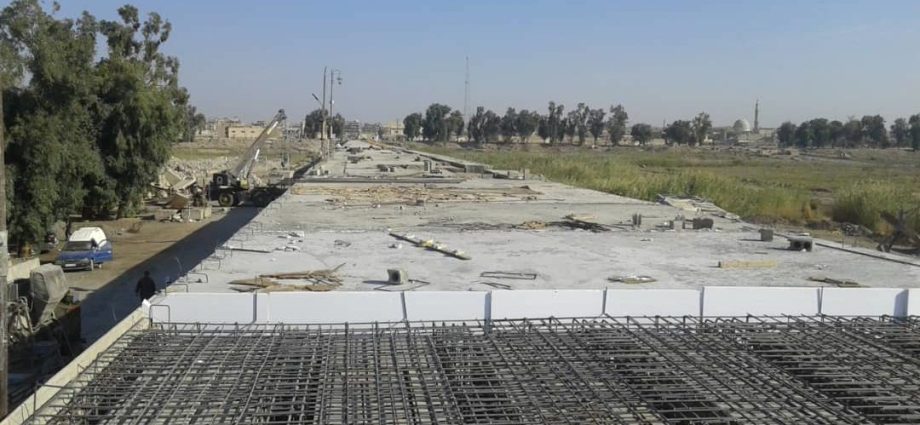Following the defeat of ISIS, much of North and East Syria was left in ruins. The terrorist organization’s apocalyptic ideology led to its fighters often battling to the bitter end, leaving IEDs littered inside buildings they formerly occupied.
In March 2019 when North and East Syria was fully liberated, the focus on the fight against ISIS switched from a military campaign to economic and humanitarian recovery for the affected people. In order to ensure a lasting defeat of ISIS, the poor socio-economic conditions that the organization took advantage of in the first place have to be sufficiently addressed.
Despite the Turkish invasion in October 2019, the Autonomous Administration of North and East Syria (AANES) was able to continue providing extensive services to the people of North and East Syria. Approximately 300 roads were maintained and paved, 16,000 trees were planted, and 73 water stations were maintained and rehabilitated. 37,419 barrels of oil were distributed free of charge to displaced families, 58 clinics were rehabilitated, two MRI centers were opened, and 8 hospitals were also rehabilitated.
The region is currently suffering many difficulties. 90 percent of the population is below the poverty line, drought has become pervasive and is causing crop failures, and the water level being low means that electricity has become limited in some areas to only 4-6 hours a day. Despite these difficulties, the AANES provides the services that it can and the region under its control is more stable and sees better living conditions than those under the regime, Hayat Tahrir al-Sham, or the Turkish-backed “Syrian National Army.”
The AANES has emphasized a focus on reconstruction in areas liberated from ISIS, especially those most devastated by the conflict, such as Raqqa and Deir-ez-Zor. Reconstruction and rubble clearing has mostly taken place in these regions. Approximately 60 percent of Raqqa was completely destroyed during the fighting to liberate the city. As of November 2021, more than half of the destroyed structures have been rebuilt.
According to Raqqa Civil Council co-chair Leila Mustafa, the city has been demined and 25 out of 26 of electricity stations have been repaired. In April 2021, only 40 percent of the city had electricity. According to the REACH Initiative, the AANES had rebuilt 53 percent of the city’s structures by April 2021, demolished 15 percent that were unsalvageable, and 32 percent remained in need of repairs. These efforts continue, although the co-chair emphasized the need for international engagement on repairing infrastructure in the city and wider region. Tens of thousands of IDPs from other parts of Syria, including regime-held areas and Idlib have settled in Raqqa since its liberation.
One of the major global concerns in 2022 has been food insecurity. Syria is one of the most affected countries by food insecurity, despite the northern and eastern parts of the country traditionally being regarded as the bread-basket of the country. The AANES has worked to keep bread prices low in order to ensure bread is as affordable to families as possible. As of April 2022, an unsubsidized 500-700-gram bag of bread cost 2,000-2,500 Syrian pounds. The AANES subsidization brings the price down to 350-500 Syrian pounds.
North and East Syria faces challenges to its stability on all fronts, including continuing military threats from ISIS cells and Turkish-backed forces, no official open border crossings, an economic crisis, and a stagnant and non-inclusive Syrian political process. Nonetheless, it continues to provide services and reconstruction in order to allow for some return to normalcy for the people and to prevent an ISIS resurgence. The reconstruction and reintroduction of services to North and East Syria is thus both in the domestic interest of all Syrian people and the international community’s interest.

